Introduction
India, a land of incredible diversity, boasts a cultural heritage that is as vast as it is profound. From the majestic forts of Rajasthan to the serene ghats of Varanasi, India’s cultural landscape is a mosaic of traditions, architectural marvels, and historical narratives. Preserving this heritage is not just about safeguarding the past but also about celebrating and understanding the identity that binds over a billion people together.
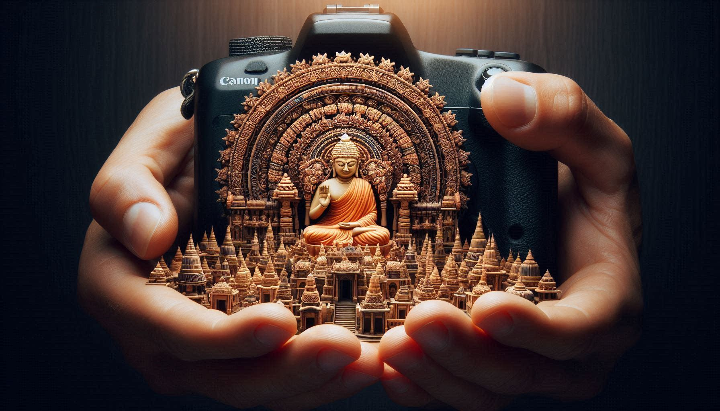
In this journey of preservation, photography plays an irreplaceable role. It captures the essence of India's rich cultural tapestry, freezes moments in time, and makes them accessible to future generations. Let’s delve into how photography is pivotal in preserving and celebrating India's cultural heritage, with a focus on some of Jaipur’s iconic heritage sites.
The Power of Photography in Cultural Preservation
Photography, as an art form, goes beyond mere documentation. It is a powerful tool that captures the nuances of cultural heritage, from the grandeur of ancient architecture to the vibrancy of traditional festivals. Through photography, we are able to document the evolution of societies, the impact of modernization on traditional practices, and the rich diversity that defines India.
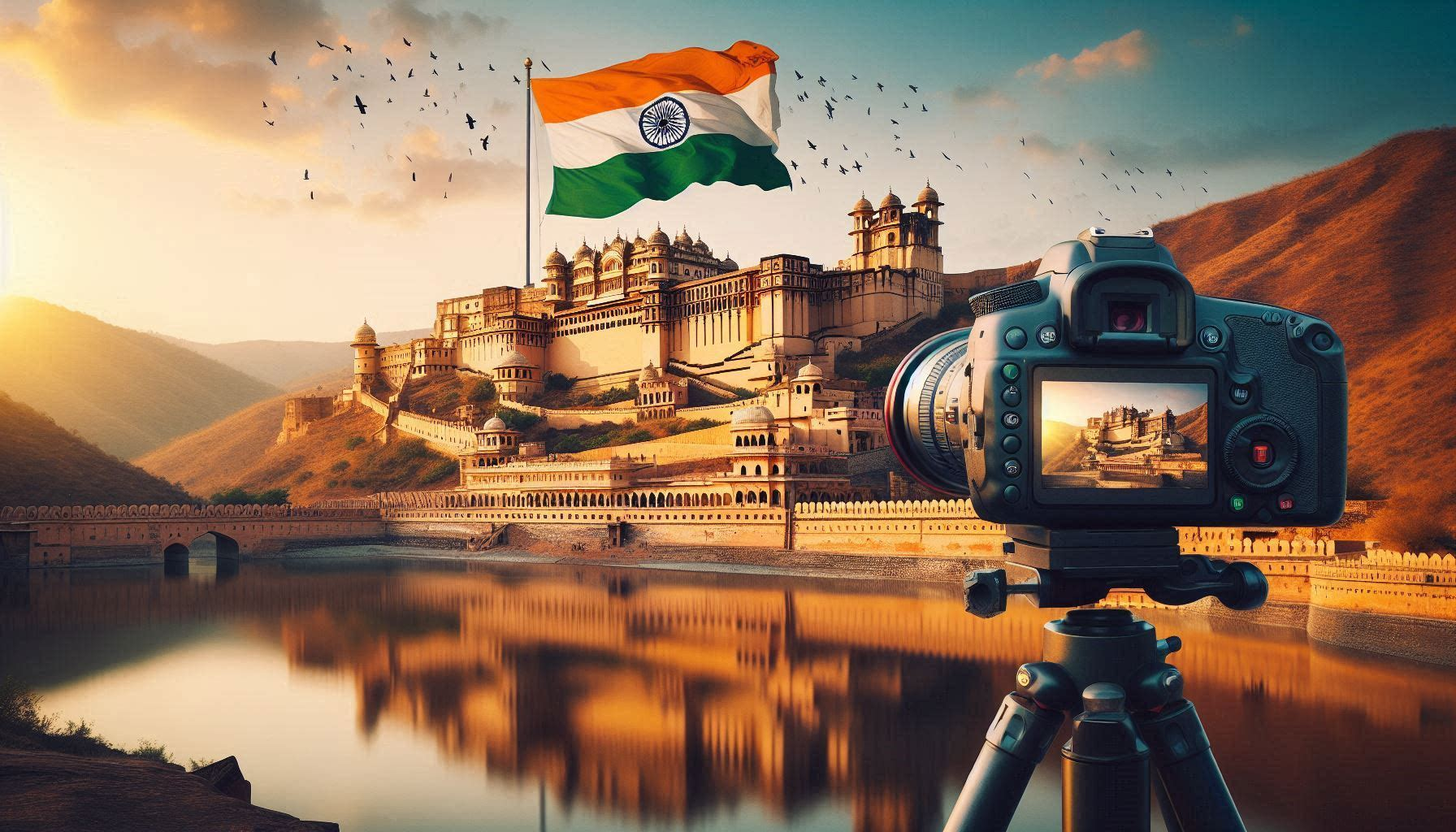
Photographs act as a visual language, transcending barriers of literacy, language, and geography. They communicate stories of the past, emotions tied to cultural identities, and the significance of preserving traditions in a rapidly changing world. In this way, photography not only preserves but also educates and inspires.
India's Rich Cultural Heritage
India’s cultural heritage is a testament to its long and storied history. This heritage is visible in the form of ancient temples, historic forts, traditional arts, and vibrant festivals. Each of these elements tells a unique story, contributing to the broader narrative of Indian civilization.
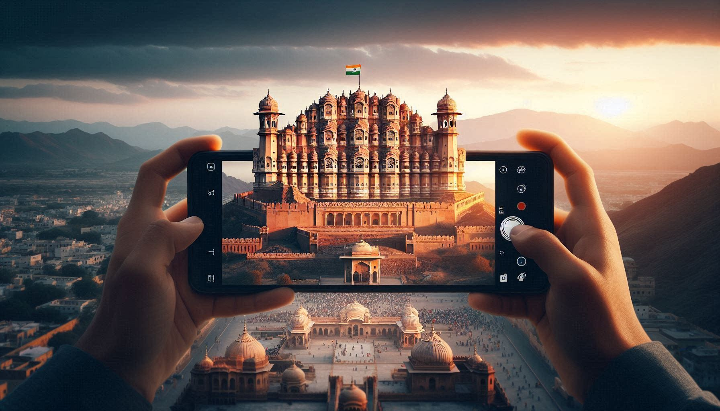
The architectural heritage, in particular, is a significant aspect of India’s cultural identity. The forts, palaces, and monuments scattered across the country are not just structures of stone and mortar; they are embodiments of the artistry, craftsmanship, and cultural values of the times in which they were built.
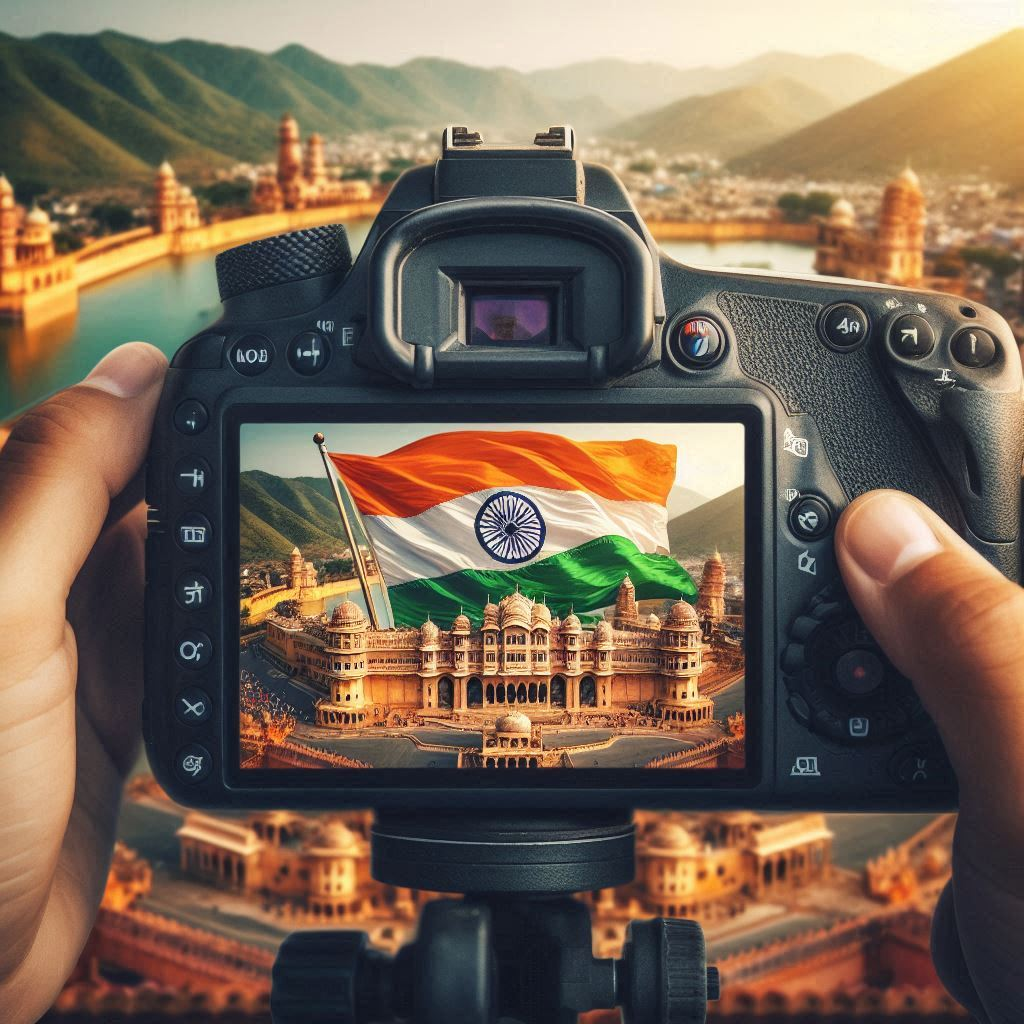
In addition to architecture, India's cultural heritage includes intangible elements like traditional music, dance forms, crafts, and festivals. These traditions, passed down through generations, are integral to the cultural fabric of India and require active preservation.
Photography and Indian Heritage Sites
Photography plays a critical role in the preservation of India’s architectural heritage. By capturing the intricate details of historic structures, photography helps document the craftsmanship that went into their construction, the wear and tear they have endured over centuries, and their current state. This visual documentation is invaluable for conservation efforts and for educating the public about the significance of these sites. As a commercial photographer with over 22 years of experience, I have had the privilege of capturing some of the most iconic landmarks and historical sites in Jaipur, such as Jaigarh Fort, Hawa Mahal, Amer Fort, City Palace, Jantar Mantar, Nahargarh Fort, and Albert Hall. Through my lens, I aim to preserve and celebrate the essence of India’s cultural legacy.
Jaigarh Fort: A Symbol of Rajput Strength and Resilience

Perched on the rugged hills of Jaipur, Jaigarh Fort stands as a symbol of Rajput military might. Built in the 18th century, this fort is known for its robust architecture and the world’s largest cannon on wheels, the Jaivana Cannon. Through photography, the imposing walls, towering bastions, and panoramic views from the fort are captured, preserving its historical significance for future generations.
Hawa Mahal: The "Palace of Winds" and Its Intricate Latticework

Hawa Mahal, one of Jaipur's most iconic structures, is a fine example of Rajput architecture. The five-story palace, with its honeycomb facade, was designed for royal women to observe street festivals without being seen. The delicate latticework, which is the hallmark of this monument, is best captured through close-up photography that highlights its intricate details and craftsmanship.
Amer Fort: A Blend of Hindu and Mughal Architectural Styles

Amer Fort, with its majestic ramparts, cobbled paths, and series of gates, is a blend of Hindu and Mughal architecture. Photography brings out the contrast between the stark exteriors and the ornate interiors of the fort, capturing the essence of its architectural brilliance.
City Palace: A Reflection of Royal Opulence
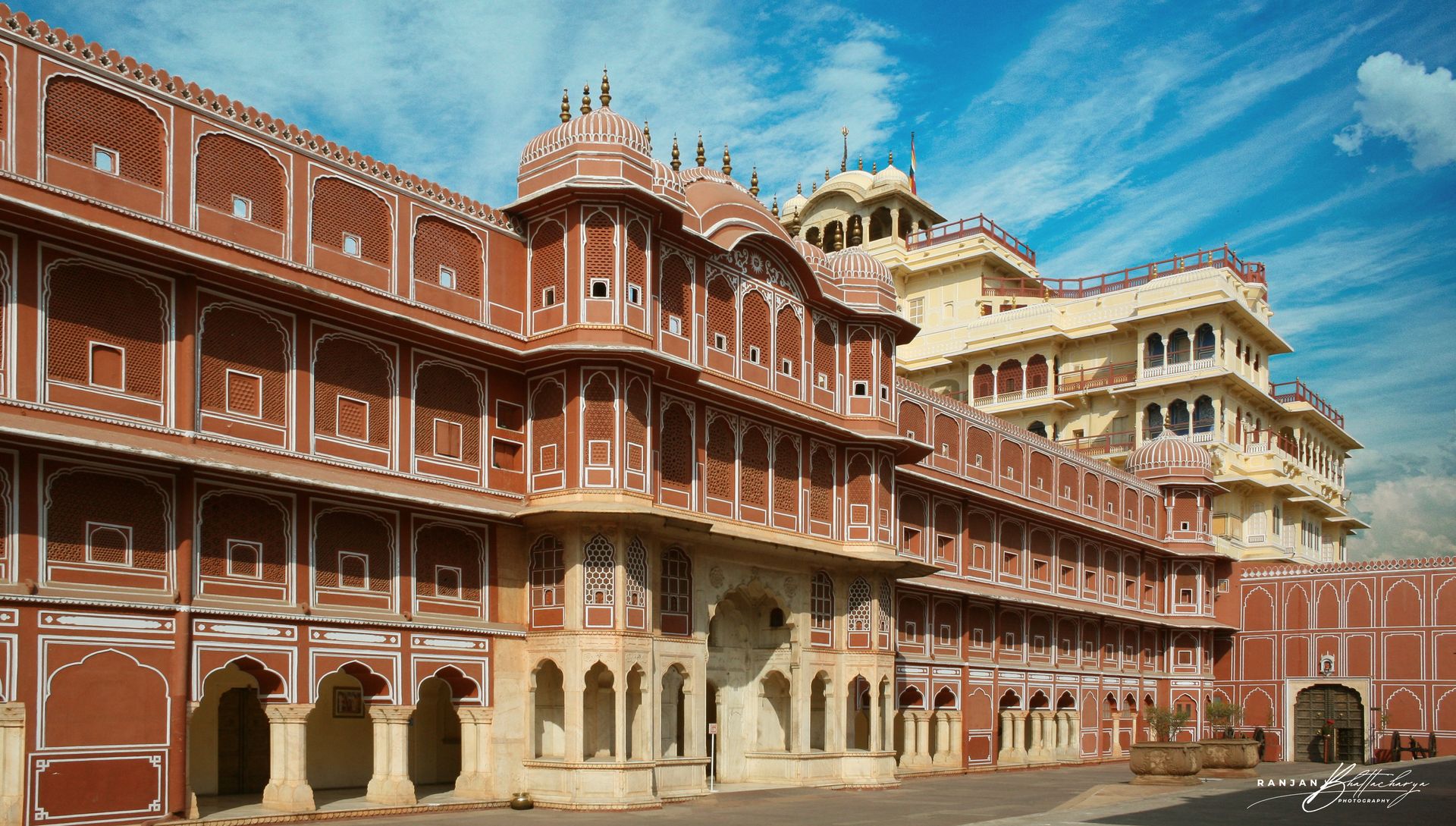
City Palace in Jaipur is a complex of palaces, courtyards, and museums, showcasing the opulence of Jaipur’s royal family. Through photography, the intricate decorations, frescoes, and regal architecture of the palace are immortalized, providing a window into the luxurious lifestyles of the Rajput rulers.
Jantar Mantar: The Astronomical Genius of Maharaja Jai Singh II

Jantar Mantar, an astronomical observatory, is a UNESCO World Heritage Site that reflects the scientific prowess of its creator, Maharaja Jai Singh II. Photography helps preserve the geometric precision of its instruments, allowing future generations to appreciate the blend of science and art that defines this site.
Nahargarh Fort: The Guardian of Jaipur

Overlooking the city of Jaipur, Nahargarh Fort was part of the defense ring of the city. Photography captures its strategic location, the panoramic views it offers, and the blend of traditional Rajasthani and European architecture, ensuring that this guardian of Jaipur’s heritage is remembered.
Albert Hall Museum: Preserving Artifacts of Cultural Significance

The Albert Hall Museum, an example of Indo-Saracenic architecture, houses a vast collection of artifacts. Photography not only captures the architectural beauty of the building but also the rich collection of art, textiles, and antiquities it preserves, highlighting the importance of museums in cultural preservation.
The Role of Photography in Celebrating Indian Culture
Beyond preservation, photography also plays a crucial role in celebrating Indian culture. From documenting the vibrancy of festivals like Diwali and Holi to capturing the finesse of traditional crafts like pottery and weaving, photography celebrates the living traditions of India.
Photographers play an essential role in preserving intangible cultural heritage by capturing the emotions, rituals, and customs that define Indian festivals and traditions. These photographs become part of the collective memory, helping to sustain these traditions for future generations.
Challenges in Photographic Preservation
While photography is a powerful tool for preservation, it comes with its own set of challenges. Ethical considerations, such as respecting the sanctity of cultural sites and obtaining permission from local communities, are paramount. Photographers must strike a balance between capturing the essence of a site and maintaining its authenticity.
Moreover, the impact of modern technology, such as the use of drones and digital enhancements, poses questions about the authenticity of heritage photography. It is crucial to use these tools responsibly to ensure that the integrity of cultural sites is not compromised.
Photography as an Educational Tool
Photography serves as an educational tool, raising awareness about the importance of preserving cultural heritage. Through exhibitions, social media, and publications, photographers share their work with the public, sparking interest in heritage conservation and promoting cultural tourism.
Social media platforms, in particular, have amplified the reach of heritage photography, allowing a global audience to experience and appreciate India’s cultural wealth. This increased visibility not only educates but also encourages responsible tourism, which is essential for the sustainable preservation of heritage sites.
Conclusion
Photography is more than just an art form; it is a guardian of cultural heritage. In a country as diverse and culturally rich as India, photography plays an essential role in preserving and celebrating the traditions, architecture, and stories that define its identity. As we move further into the digital age, the role of photography in cultural preservation will only grow in importance, ensuring that the vibrant tapestry of India’s cultural heritage is cherished for generations to come.
Moreover, photography offers financial opportunities for those who capture and document cultural heritage. Photographers can earn by selling prints, licensing their images for publications, participating in exhibitions, or offering their work to tourism boards and cultural institutions. The demand for high-quality images of heritage sites and cultural events is ever-growing, providing a viable source of income for dedicated photographers.
As we celebrate Independence Day, let us remember the importance of preserving and celebrating our cultural heritage. Through photography, we can capture the essence of India’s rich history and ensure that it continues to inspire and educate future generations. If you are interested in professional photography services to document and celebrate cultural heritage, feel free to reach out to me.
I hope this blog post resonates with your audience and helps in preserving and celebrating India’s cultural heritage. Happy Independence Day! 🇮🇳✨
FAQs
1. How can photography help in preserving cultural heritage?
Photography helps in documenting and showcasing the intricate details of cultural heritage, making it accessible to future generations, and aiding in conservation efforts.
2. What are some of the ethical concerns in heritage photography?
Ethical concerns include respecting the sanctity of cultural sites, avoiding damage during photography, and obtaining permission from local communities to ensure respectful representation.
3. How does photography influence cultural tourism in India?
Photography highlights the beauty and significance of cultural sites, attracting tourists and promoting responsible tourism, which contributes to the preservation and maintenance of these sites.
4. Why is it important to photograph intangible cultural heritage?
Photographing intangible cultural heritage, such as festivals and traditions, ensures that these practices are documented and remembered, helping to sustain them for future generations.
5. How can amateur photographers contribute to preserving cultural heritage?
Amateur photographers can contribute by responsibly capturing cultural sites and traditions, sharing their work to raise awareness, and supporting conservation efforts through their photography.
6. How can photographers earn from capturing cultural heritage?
Photographers can earn by selling their images as prints, licensing them for use in books, magazines, and websites, participating in photography exhibitions, or working with tourism boards and cultural organizations to promote heritage sites. The growing interest in cultural tourism also provides opportunities for photographers to lead photo tours and workshops focused on heritage photography.
The Role of Photography in Preserving and Celebrating India’s Rich Cultural Heritage